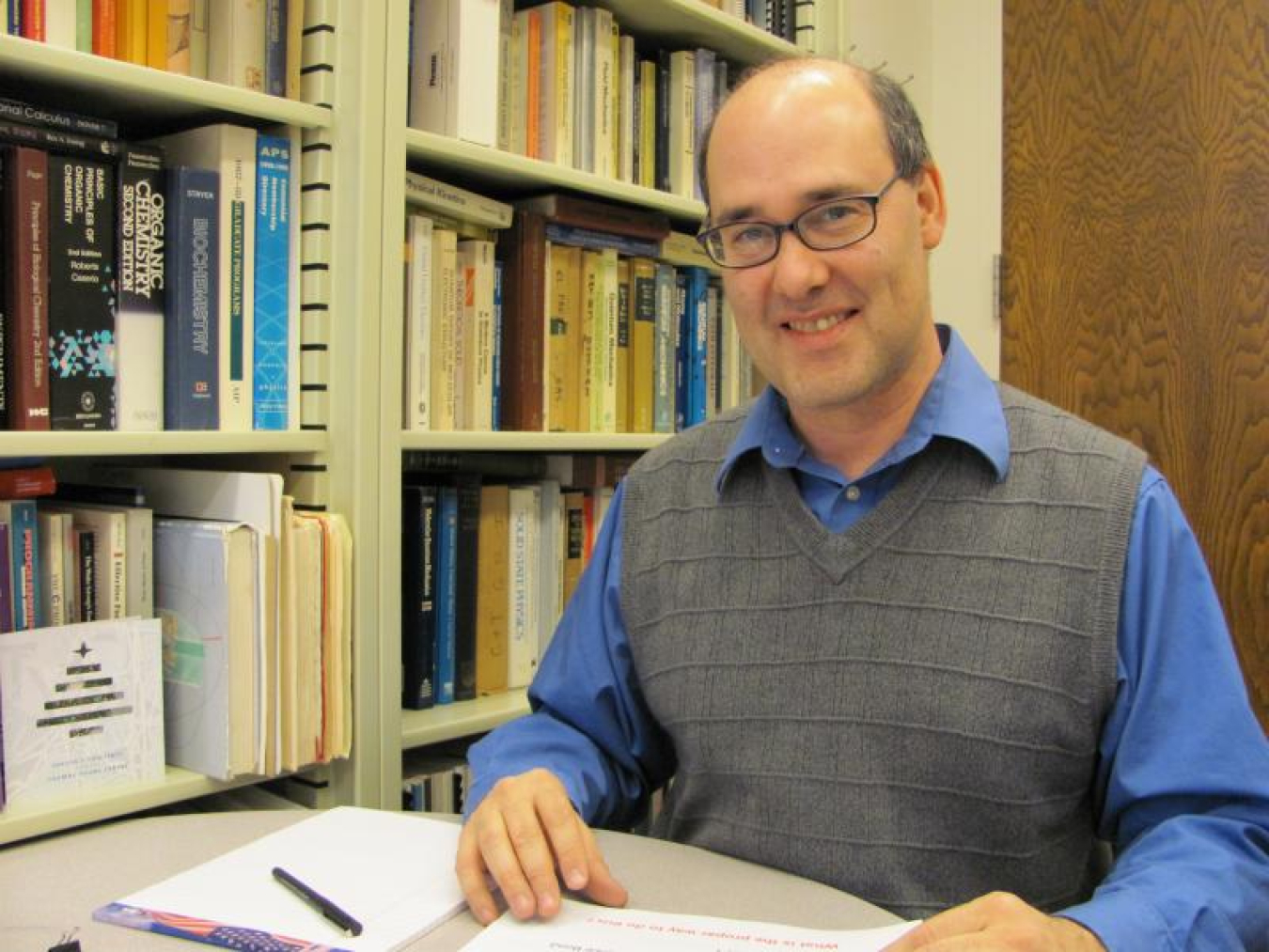
Chemical Theorist Greg Schenter | Photo Courtesy of PNNL
Greg Schenter is a Laboratory Fellow in Pacific Northwest National Lab’s (PNNL) Chemical Sciences Division. He recently spent some time with us to share why his interests in math, science, and even music, intertwine with each other and why Doctor Who is his favorite fictional scientist.
Question: What sparked your interest in a science career?
Greg Schenter: I like the challenge of working on a puzzle and the fun of working things out and exploring the unknown. I pulled this applicable Albert Einstein quote from my daughter’s Facebook page – “The most beautiful experience we can have is the mysterious. It is the fundamental emotion that stands at the cradle of true art and true science.”
Q: What brought you to your current position at PNNL?
GS: I always liked math and science and the relationship between chemistry and physics. My father is a nuclear physicist, and growing up in the Tri-Cities, WA area I was very familiar with nuclear energy, so as an undergrad at Caltech I studied nuclear physics. In graduate school, I studied applied physics and also did some work on plasma physics and transistors. Given my familiarity with nuclear energy, I even had an office inside a nuclear reactor. One weekend, I was visiting my parents in the Tri-Cities and they suggested I give a talk at PNNL about my graduate studies. At that time I took a risk and changed over to a focus on chemistry, and I was offered a job at the lab. Since then I’ve worked in the shared space between chemistry and physics.
Q: You mentioned that your father is a nuclear physicist. Can you tell us about the mentors or role models you had who inspired you to become a scientist?
GS: Well, in junior high school I had a great science teacher who encouraged me to take chemistry, and in high school, I had great chemistry, physics and biology teachers. Also, through a school program called “Inquiry into Science,” I worked for a local scientist and even published a conference paper on decay heat and nuclear reactors. It was great to have that sort of mentor…someone who’d put up with me. And then as an undergraduate, I wrote a joint paper with my father on antineutrinos, a father-son paper, which was a great opportunity.
Q: What projects are you working on right now? What do you hope they will lead to?
GS: I’m working on the mathematics and physics of how molecules interact and developing mathematical models to simulate how molecules move and band together to form new materials. I hope these projects lead to better ways to store energy, for example using hydrogen, and better understanding of ways to control chemical reactions and create materials with interesting and useful properties.
Q: What projects are you watching (beside your own)?
GS: Switchable solvents and useful applications of supercomputers.
Q: What can you never start a day at the lab without?
GS: Asking myself, “am I having fun?” Playing and exploring…scientifically, of course. Coffee.
Q: Do you have any advice for students interested in science?
GS: Have fun and find your passions.
Q: Who is your favorite fictional scientist? Why?
GS: Doctor Who. He is creative and thinks outside the box.
Q: If you weren’t a scientist, what would you be?
GS: A musician or a film editor. I’ve always thought music is very mathematical – math and music use the same part of your brain. At too young of an age I played the violin. I like dabbling on the piano, but it’s tough to find time for both music and science. On the film side, one of my daughters is studying to be film editor and I’ve followed her interests.